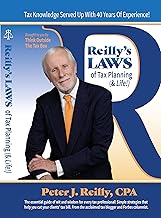Bank of America Tower Midtown Manhattan – Photo credit -Gdefreitas
This was originally published on September 19th, 2010.
Tax court summary opinions frequently feature taxpayers bringing fairly lame arguments forward. Like the couple who managed to log 90,000 miles, because whenever they were out and about they were in business. We should expect higher standards from the IRS. So it is a little disturbing to witness the IRS being lame. On the other hand, taxpayer victories in the tax court help us continue to have faith in the system.
Dennis W. Gaffney v. Com (TC Summary Opinion 2010-128) concerns cancellation of indebtedness income. Accountants understand cancellation of indebtedness income because they think in double entry. Some of them think there is a big balance sheet in the sky. If somebody writes something off without somebody picking up income the fabric of space-time will become disturbed. They can be extremely disturbed by asymmetrical results. Personally I put taxing debt discharge income in the same category as the GAAP going concern qualification. It’s kicking somebody when they are down.
The exact year that you recognize income is always an important issue since your tax is an annual computation. It is particularly significant with COI income though, since COI income is excludable to the extent that you are insolvent. One has to wonder why anybody would be canceling your indebtedness for you when you are not insolvent. The Gaffney case is all about timing.
The Gaffneys had lived in Hawaii, but because of some business disputes, they found that they had to abandon their residence and in 1993 they moved to Carefree, Arizona. Apparently there is something magical in that town’s name. In 1994 the Bank of America foreclosed their Hawaii home and in 1995 obtained a deficiency judgment in the amount of $90,845. News of these events did not make it to the Gaffneys who were at least free of those cares in Carefree. In August of 1995, they moved to Cave Creek, Arizona where they continued to have mail forwarded from their former Hawaii residence. No news of the foreclosure or deficiency judgment reached them there either. In 1998 they moved to Oregon.
In 1996 Mr. Gaffney had settled a dispute with the insurer of his business and paid off his various creditors. He was not aware of the judgment by Bank of America and they were not involved in the settlement. The problem may have been related to the fact that BOA attributed the loan deficiency to Thomas Gaffney, who according to BOA had the same address and social security number as Dennis Gaffney, who is apparently unacquainted with his fiscal doppelganger. BOA finally gave up collection action in 2001. Their last activity was the creation of an asset profile on Thomas Gaffney in April of 2003.
There must have been a BOA accounting minion troubled by perturbances in the big balance sheet in the sky. In 2006 they issued a 1099-C to the mysterious Thomas using Dennis’s social security number and 1998 address. What the IRS brought to the tax court was the 1099-C and a letter from Bank of America saying that they had reviewed the file and that the amount of discharge was correct and had occurred in 2006.
The court was not impressed. There was a discussion of when the discharge may have occurred. The argument for 1994 was fairly strong, but it wasn’t really necessary to make an exact determination. The important point was that whenever the discharge occurred it was well before 2006.































































































